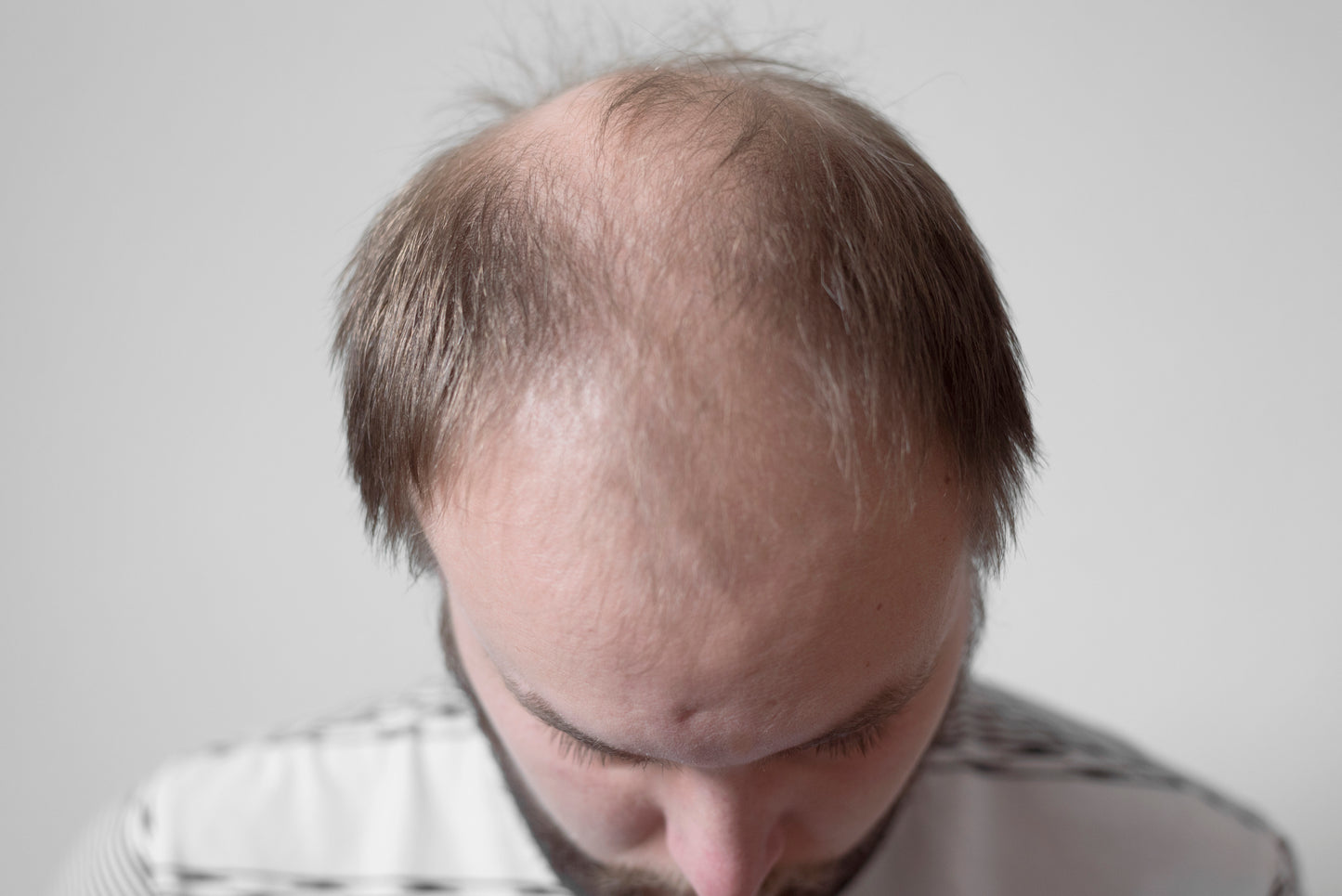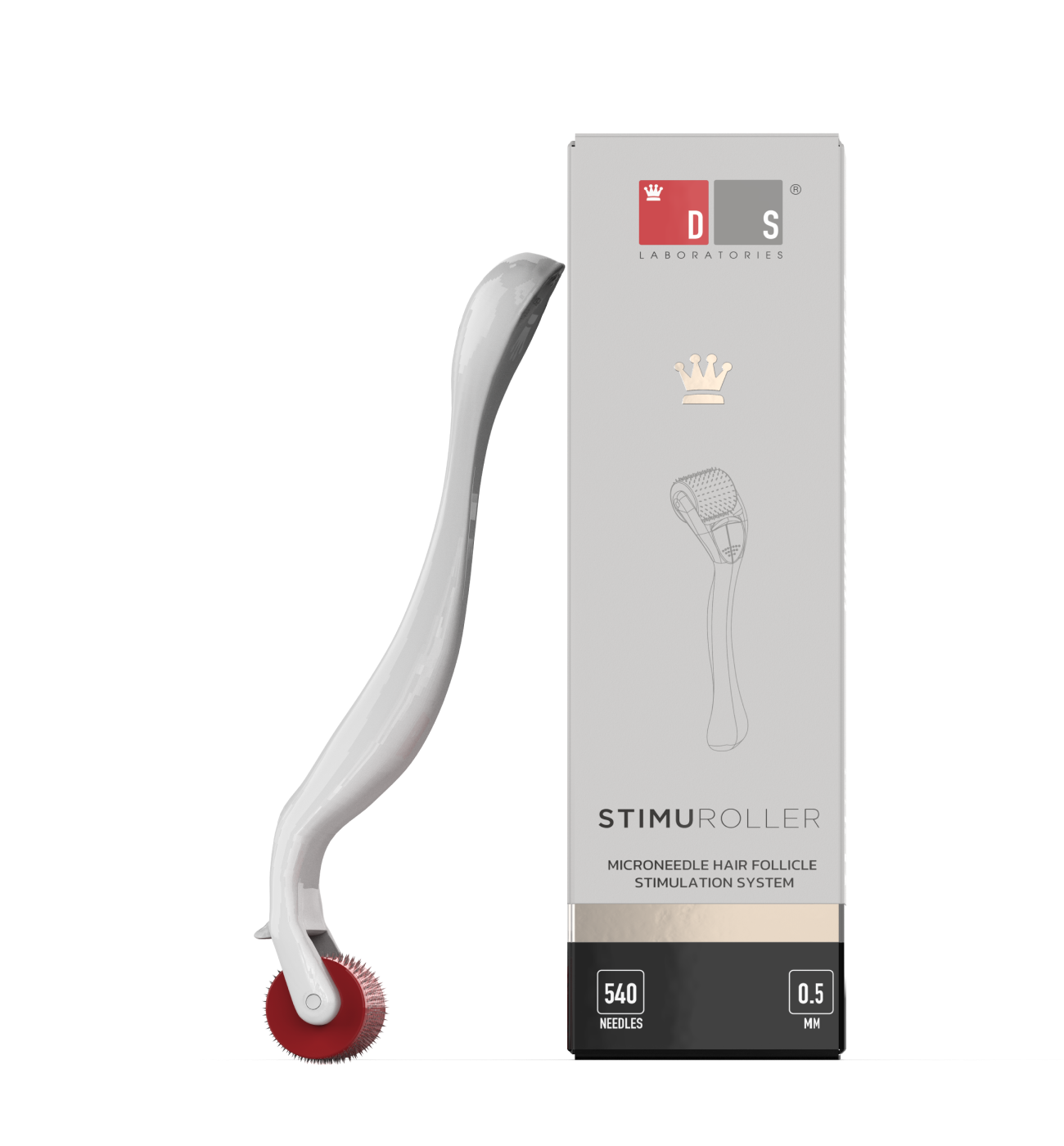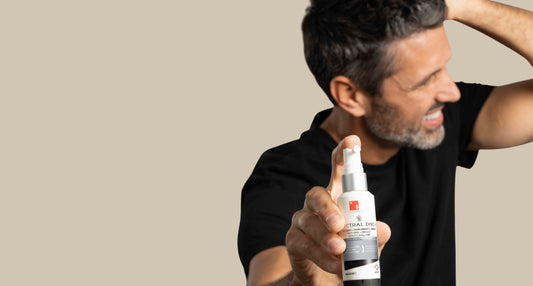Several different methods can help classify male pattern hair loss. Some providers use their own scale, whereas others follow more textbook stages you may read about online. One of the most common methods for staging and evaluating hair loss is the Norwood Scale. Developed in the 1950s and then refined in the 1970s, this scale has been used for several decades to help providers and their patients track the progression of male pattern hair loss. Here’s a look at the seven stages of hair loss according to the Norwood Scale and what you can expect from each one.
The Different Stages of Hair Loss
Stage 1:
The first stage is where there are no noticeable signs of hair loss, or if there are, it is very minimal. For this reason, this stage is considered the control stage and is generally what you hope to maintain or return to if you notice hair loss.
Stage 2:
This next stage is where you or your provider start to notice some changes along the hairline. These changes include thinning along the hairline, especially around the temples. It may be a very gradual change at this point, but it is nonetheless cause for alarm and action (more on what action entails a bit further down).
Stage 3:
In stage 3, hair loss becomes more obvious, especially along the hairline, whereas in stage 2 it was likely still effortless to conceal and ignore. Now, the hairline is obviously receding, especially around the temples, which gives the hairline a distinct “M” shape that is classic of this type of hair loss in men.
This stage also has an additional classification called a Stage 3 Vertex, which is where a small bald patch begins to appear on the top of the head. Some thinning may have started at stage 2, but it likely was not noticeable at that point.
Stage 4:
In this stage, hair loss is undeniable and becomes more advanced. Rather than an “M” shape, the receding hairline now takes on a “U” shape. Additionally, if a bald spot on the crown is present, it becomes larger. However, a line of hair remains between the bald spot and the hairline. Men with no bald patch on their crown may instead experience a deeper “U” shape.
Stage 5:
As you can probably guess, stage 5 becomes a more severe version of stage 4. However, in this stage, there is still a thin line of hair between the crown and hairline, and the only other change is that any balding on the crown begins to extend down the back of the head.
Stage 6:
In this second to last stage, the strip of hair separating the crown and hairline is no longer there. A man in this stage of hair loss is basically bald all over the top of their head. However, they do still have hair on the sides of their head.
Stage 7:
The final stage of hair loss is when the sides of the head no longer have hair or only have a very thin line. The hair that remains is generally fragile and fine.
How to prevent hair loss from progressing
Left untreated, most men with male pattern hair loss will follow this progression through these seven stages and eventually end up with little to no hair. As a result, some men choose to shave their heads completely so they do not have to deal with the troubles that show up as hair loss advances, whereas others try to tackle it as long as possible.
If you are one to keep your hair on your head, the most crucial point in fighting this hair loss condition is to act as quickly as possible. The sooner you treat hair loss, the better. Indeed, the longer you let it go, the harder it will be to grow back.
One of the most popular and successful treatments of androgenic alopecia is minoxidil–a topical solution applied to the scalp that encourages new hair growth. If you wait until stage 4 or 5 to begin treatment, it may be very hard to see any new growth with regular use of minoxidil. If your hair loss has advanced or minoxidil has not worked, there are various procedures you may consider, including laser, scalp pigmentation, microneedling, and hair transplant.
Aside from using a solution like minoxidil, it helps also to incorporate the following in your hair loss treatment plan:
- Using a shampoo and conditioner system that targets hair loss
- Eating a nutrient-dense, healthy diet
- Reducing stress
- Doing scalp massage to stimulate blood flow
- Getting regular restful sleep
- Quit smoking














